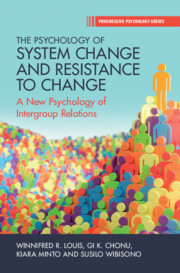Refine search
Actions for selected content:
157 results
13 - Conclusion
- from Part III - Mobilization
-
-
- Book:
- A Comparative Historical Sociology of Corruption
- Published online:
- 19 December 2025
- Print publication:
- 22 January 2026, pp 252-276
-
- Chapter
- Export citation
Crisis? What Crisis? Tracing Social Instability Between the 5th and the 4th Centuries BC: A View from north-west Iberia
-
- Journal:
- Proceedings of the Prehistoric Society , First View
- Published online by Cambridge University Press:
- 19 December 2025, pp. 1-16
-
- Article
-
- You have access
- Open access
- HTML
- Export citation

Social Change across the End of the Aegean Bronze Age
-
- Published online:
- 10 December 2025
- Print publication:
- 08 January 2026
-
- Element
-
- You have access
- HTML
- Export citation
“CALL4”—Japan’s Public Interest Lawyers Enter the 21st Century
-
- Journal:
- Asia-Pacific Journal / Volume 23 / 2025
- Published online by Cambridge University Press:
- 02 December 2025, e24
-
- Article
-
- You have access
- Open access
- HTML
- Export citation
Rooting Equality: Testing the Effectiveness of Activist Frames Combating Homophobia in Zimbabwe
-
- Journal:
- British Journal of Political Science / Volume 55 / 2025
- Published online by Cambridge University Press:
- 27 November 2025, e170
-
- Article
-
- You have access
- Open access
- HTML
- Export citation

Ancient Assyrians
- Identity and Society in Antiquity and Beyond
-
- Published online:
- 09 October 2025
- Print publication:
- 23 October 2025
Introduction and Overview
-
- Book:
- The Psychology of System Change and Resistance to Change
- Published online:
- 23 September 2025
- Print publication:
- 09 October 2025, pp 1-2
-
- Chapter
- Export citation
Chapter 6 - Intergroup Relations in the World Ecological and Environmental Context
- from Part II - The New Psychology of Intergroup Relations
-
- Book:
- The Psychology of System Change and Resistance to Change
- Published online:
- 23 September 2025
- Print publication:
- 09 October 2025, pp 121-139
-
- Chapter
- Export citation
Chapter 9 - Temporal Cycles and the Psychology of Time
- from Part II - The New Psychology of Intergroup Relations
-
- Book:
- The Psychology of System Change and Resistance to Change
- Published online:
- 23 September 2025
- Print publication:
- 09 October 2025, pp 185-200
-
- Chapter
- Export citation
11 - Inequalities between Individuals, Households and Nations
-
- Book:
- An Economic History of Europe
- Published online:
- 02 October 2025
- Print publication:
- 02 October 2025, pp 254-274
-
- Chapter
- Export citation
24 - Children in Social Change
- from Part V - Postcolonial and Political–Economic Interventions
-
-
- Book:
- The Cambridge Handbook of Psychological Anthropology
- Published online:
- 22 October 2025
- Print publication:
- 25 September 2025, pp 581-603
-
- Chapter
- Export citation
12 - Adolescence and Youth
- from Part III - Lifespan Development in Diverse Sociocultural Contexts
-
-
- Book:
- The Cambridge Handbook of Psychological Anthropology
- Published online:
- 22 October 2025
- Print publication:
- 25 September 2025, pp 303-325
-
- Chapter
- Export citation
11 - Childhood
- from Part III - Lifespan Development in Diverse Sociocultural Contexts
-
-
- Book:
- The Cambridge Handbook of Psychological Anthropology
- Published online:
- 22 October 2025
- Print publication:
- 25 September 2025, pp 275-302
-
- Chapter
- Export citation

The Psychology of System Change and Resistance to Change
- A New Psychology of Intergroup Relations
-
- Published online:
- 23 September 2025
- Print publication:
- 09 October 2025
Chapter 2 - Social Work for a Better World: Are We In-between Stories?
- from Introduction
-
-
- Book:
- Learning through Social Work Stories-That-Matter
- Published online:
- 28 August 2025
- Print publication:
- 11 September 2025, pp 20-34
-
- Chapter
- Export citation
Conclusion
-
- Book:
- Multispecies Legality
- Published online:
- 18 June 2025
- Print publication:
- 21 August 2025, pp 167-172
-
- Chapter
- Export citation
8 - Law and Social Change
-
- Book:
- Appearance, Disability and the Law
- Published online:
- 31 July 2025
- Print publication:
- 14 August 2025, pp 115-126
-
- Chapter
- Export citation
Chapter Nine - Conclusion
- from Part II
-
- Book:
- From Manners to Rules
- Published online:
- 29 August 2025
- Print publication:
- 07 August 2025, pp 308-328
-
- Chapter
- Export citation
16 - Change and International Legitimacy
- from Part V - International Legitimacy and Change
-
- Book:
- The Law and Politics of International Legitimacy
- Published online:
- 14 July 2025
- Print publication:
- 24 July 2025, pp 301-317
-
- Chapter
- Export citation
Chapter 14 - After the Reckoning
- from Part II - Politics and Debates
-
-
- Book:
- August Wilson in Context
- Published online:
- 09 June 2025
- Print publication:
- 26 June 2025, pp 174-183
-
- Chapter
- Export citation
